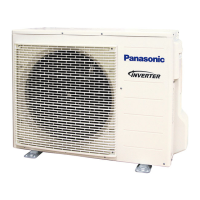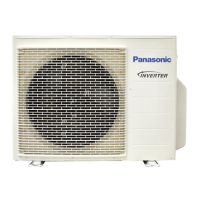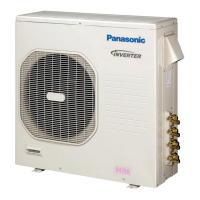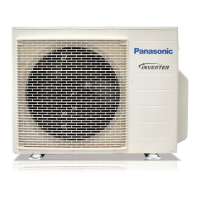Why does my Panasonic CU-3RE18SBE outdoor unit emit water or steam?
- CCharles LeeAug 26, 2025
The water or steam emitted from the outdoor unit of your Panasonic Air Conditioner is due to condensation or evaporation occurring on the pipes.

Why does my Panasonic CU-3RE18SBE outdoor unit emit water or steam?
The water or steam emitted from the outdoor unit of your Panasonic Air Conditioner is due to condensation or evaporation occurring on the pipes.
What to do if Panasonic CU-3RE18SBE Air Conditioner unit does not work?
If your Panasonic Air Conditioner unit does not work, check if the circuit breaker is tripped and verify that timers have not been set.
Why POWER indicator blinks during HEAT mode on Panasonic CU-3RE18SBE?
If the POWER indicator on your Panasonic Air Conditioner blinks during HEAT mode and there's no warm air, with the flap closed, it means the unit is in defrost mode and AIR SWING is set to AUTO.
Why my Panasonic CU-3RE18SBE Air Conditioner makes water flowing sound?
If you hear a water flowing sound during the operation of your Panasonic Air Conditioner, it is due to the flow of refrigerant inside the unit.
Why does my Panasonic Air Conditioner outdoor unit emit water/steam?
The water or steam emitted from the outdoor unit of your Panasonic Air Conditioner is due to condensation or evaporation occurring on the pipes.
Why is operation delayed after restarting my Panasonic CU-3RE18SBE?
The operation of your Panasonic Air Conditioner is delayed a few minutes after restarting as a protection for the unit’s compressor.
What to do if my Panasonic Air Conditioner's HEAT/COOL mode isn't working efficiently?
If your Panasonic Air Conditioner isn't heating or cooling efficiently, make sure that you set the temperature correctly, close all doors and windows, clean or replace the filters, and clear any obstructions at the air inlet and outlet vents. Also, check if the circuit breaker has tripped or if any timers have been set.
Why does my Panasonic Air Conditioner's outdoor unit emit water or steam?
The water or steam emitted from the outdoor unit of your Panasonic Air Conditioner is due to condensation or evaporation occurring on the pipes.
What causes a cracking sound in Panasonic CU-3RE18SBE during operation?
The cracking sound you hear during the operation of your Panasonic Air Conditioner is due to temperature changes causing the expansion and contraction of the unit.
Why does the POWER indicator blink during HEAT mode in my Panasonic Air Conditioner?
If the POWER indicator blinks during HEAT mode with no warm air supply and the louver is closed on your Panasonic Air Conditioner, the unit is in defrost mode, and AIR SWING is set to AUTO.
| Cooling Capacity (BTU) | 18000 |
|---|---|
| Refrigerant | R32 |
| Inverter | Yes |
| Cooling Capacity (kW) | 5.3 |
| Power Supply | 220-240V, 50Hz |
| Type | Split System |
| Noise Level (Outdoor Unit) | 50 dB |
Instructions on selecting modes, starting/stopping, and adjusting temperature.
Guidelines for safe handling and installation of indoor and outdoor units.
Prohibitions and compulsory actions to prevent hazards like injury or electric shock.
Guidelines for safe use of power supply, cords, and plugs.
Hazards associated with R32 refrigerant and precautions to avoid ignition risks.
Safety requirements for installing and operating the unit in rooms, ventilation, and avoiding ignition sources.
Special considerations and precautions when using R32 refrigerant, including installation tools and piping.
Guidelines for installing the unit in suitable spaces, pipework, and compliance with regulations.
Requirements for trained and certified personnel performing servicing and maintenance.
Safety checks and procedures for working on systems with flammable refrigerants to minimize ignition risks.
Methods and equipment for checking refrigerant presence and handling leaks.
Prohibiting ignition sources when working with flammable refrigerants.
Safety procedures for repairing sealed components, including disconnecting power and leak detection.
Methods for detecting flammable refrigerants without using ignition sources.
Acceptable methods for detecting leaks in refrigerant systems, including equipment and fluids.
Procedures for removing and evacuating refrigerant from the system for repairs or decommissioning.
Requirements for charging refrigerant, including contamination prevention and electrostatic discharge.
Steps for safely decommissioning the unit, including refrigerant recovery and electrical isolation.












